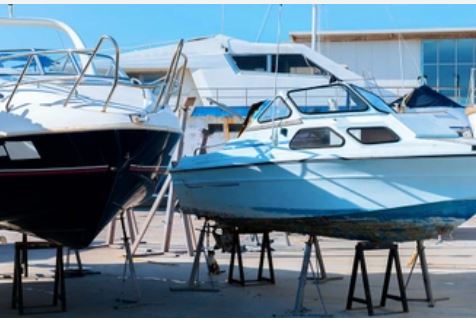How to winterize a boat
If your boat isn’t in a warm, temperate area where you’re casting off year-round, winterizing your boat is a must. Even if you dock where the water doesn’t freeze, seasonal checks can help protect your investment.
When should I winterize my boat?
Winterizing a boat normally begins in late October, says Lenox Grasso, director of educational programs for the American Sailing Association. Although he’s based in Marina Del Rey, CA, he has extensive sailing experience along the East Coast.

Steps to winterizing a boat
1. Get the water out
Boat winterization is essentially the same whether you have a powerboat or a sailboat. The same concept applies to winterizing your home to prevent pipes from freezing. “It’s mostly about getting water out of the boat for the winter because you don’t want it to freeze up and expand,” Grasso says. If your boat is in a boatyard, open the drain plug. For a boat staying in the water, use a bucket and sponge.
Drain the plumbing system by turning on all the faucets. “Turn on your electrical pumps and let those faucets bleed dry,” he says. “This is how you would normally get your water out of freshwater tanks.”
Pour some water into the toilet to move waste fluids into the holding tank. Grasso recommends having pros at a boatyard pump out the boat for the winter. They know the equipment. Doing your own pump-out to save money isn’t worth the risk of being sprayed with human waste – it happens. When Grasso comes back to the slip, he pumps some marine biodegradable antifreeze down the toilet into the holding tank and leaves that in during winter.
2. Stabilize your fuel
Follow the boat manufacturer’s suggested procedures, Grasso says. Generally, you’ll put a stabilizer into your fuel that controls growths such as fungi, although there shouldn’t be much over the winter. “You can put it into your outboard engine or, if you have an inboard engine, put that into your fuel tank and then run that so that it mixes into your fuel,” he says.
Be careful about what you add. Using ethanol-blended fuel rather than a fuel-stabilizing additive could cause phase separation, where you end up with water-saturated fuel in the spring, Grasso cautions. This requires a process known as polishing the fuel.
3. Winterize your engine coolant system
Grasso admits this is his least favorite boat winterization step, but it’s still important. Close the raw water inlet seacock, take the hose off, which involves unscrewing clamps, and put the hose into a bucket of marine biodegradable antifreeze.
Turn on the engine and let it suck up the antifreeze, drawing it through all the pumps, the hoses, the heat exchanger, and the muffler until you see the antifreeze coming out of the wet exhaust. At that point, turn the engine off. Grasso advises leaving the seacock closed and the hose detached until the spring.
4. Drain the cooking gas
Cooking gas like butane or propane behaves like water, Grasso says. When the season ends, turn on the solenoid and all the burners in the galley until the flames on the range top go out. Grasso adds that most boaters do this step after every cruise, but it should still be on the boat winterization list.
If you have a full propane tank you don’t want to burn, disconnect it from the hose. Then turn on the burners, light the stove, and let the gas left in the line drain out.
5. Add a cover
Winter boat storage could be in the water or on land, depending on your preference. Even if you decide to store your boat outside in a boatyard, covering the boat for winter helps. It might be part of the boatyard’s service, Grasso notes.
In the water, you still want protection. Recalling boat owners in Boston who live aboard during winters, Grasso suggests building a little wooden spine on deck and then wrapping it with shrink wrap. That will protect it from the elements like snow, rain, and wind, he says. Learn more about storing your boat in storm season.
6. Do regular inspections
Even in temperate areas, you still want to do seasonal checks. “I hire a professional rigger and ask him or her to inspect the standing rigging on the boats in February and January,” Grasso says about the local sailing club’s fleet. “They’re still being used in those months, but it’s low usage.” The pro inspects the rigging for corrosion and wear on the twisted wire cables. When that inspection doesn’t happen during the winter, the mast could drop down, called dismasting. It’s rare but dangerous.
Make sure all the seacocks are closed after you winterize your boat, especially if your boat is spending cold months in the water. “The hose that comes away from the seacock to go to the engine or the sink, if it were to rupture or crack for some reason, then your boat is going to begin to leak,” Grasso says. After a few weeks, it could sink. During the winter, you also want to check all your filters, including fuel and oil filters. “You might as well change it now,” Grasso suggests. “It’ll be one less thing to do in the spring.”
No matter the season, keep your boat protected with a boat insurance policy. Learn about how boat insurance works and more on boat comprehensive and collision insurance.

